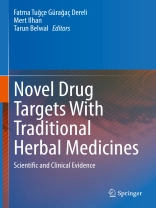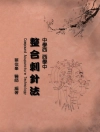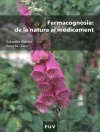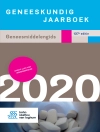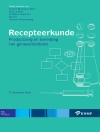This book collects information about the most popular ethnomedicinal plants, which are common in Turkey and around the world. It presents the ethnopharmacological records, in vivo and in vitro studies, side effects, chemical compositions and clinical studies of these medicinal plants. Its special focus is on the novel drug targets for disease and their possible mechanisms of action. It covers botanical descriptions the status of the plants, and food or drug interactions including precautions and warnings about the plants and the available market products. It provides an explanation of recorded and known plant administration dosages. Also, the gap between the traditional practice and scientific/clinical evidences in the use of ethnomedicinal plant is acknowledged.
It is well known that traditional knowledge of the use of the medicinal plants in therapy is an important resource for the discovery of novel treatment options and drug targets. The main purpose of this book is to draw attention to ethnomedicinal plant species. Data on the therapeutic potentials of these medicinal plants can now be accessed from a single source. It provides an important resource for future research opportunities for harnessing the full potential of these plants.
Cuprins
Chapter 1: Achillea biebersteinii Afan.- Chapter 2: Aesculus hippocastanum L..- Chapter 3: Berberis crataegina DC..- Chapter 4: Calendula officinalis L..- Chapter 5: Camellia sinensis (L.) Kuntze.- Chapter 6: Capsella bursa-pastoris (L.) Medik..- Chapter 7: Capsicum annuum L..- Chapter 8: Cedrus libani A.Rich..- Chapter 9: Chelidonium majus L..- Chapter 10: Cichorium intybus L..- Chapter 11: Cistus laurifolius L..- Chapter 12: Coriandrum sativum L..- Chapter 13: Cornus mas L..- Chapter 14: Curcuma longa L..-Chapter 15: Cydonia oblonga Mill..- Chapter 16: Cynara scolymus L..- Chapter 17: Equisetum arvense L..- Chapter 18: Foeniculum vulgare Mill..- Chapter 19: Fraxiınus ornus L..- Chapter 20: Fumaria officinalis L..- Chapter 21: Helichrysum plicatum DC..- Chapter 22: Hyoscyamus niger L..- Chapter 23: Juglans regia L..- Chapter 24: Laurus nobilis L..- Chapter 25: Liquidambar orientalis Miller.- Chapter 26: Matricaria chamomilla L..- Chapter 27: Melissa officinalis L..- Chapter 28: Momordica charantia L..- Chapter 29: Nigella sativa L..- Chapter 30: Olea europaea L..- Chapter 31: Papaver somniferum L..- Chapter 32: Rheum ribes L..- Chapter 33: Rosa canina L..- Chapter 34: Rosmarinus officinalis L..- Chapter 35: Silybum marianum L. Gaertn..- Chapter 36: Urtica dioica L.- Chapter 37: Valeriana officinalis L..- Chapter 38: Viburnum opulus L..
Despre autor
FATMA TUGCE GURAGAC DERELI
Dr. Guragac Dereli graduated from Gazi University, Faculty of Pharmacy. She completed her Ph D from Gazi University, Health Sciences Institute, Department of Pharmacognosy, Turkey. She is now working at Süleyman Demirel University, Faculty of Pharmacy, Department of Pharmacognosy, Turkey as Assistant Professor. Her research area includes natural product chemistry, biological activity of the medicinal plants and isolation of bioactive phytochemicals. She has 27 publications about her research field and several presentations in scientific meetings. She is working on wound healing, urolithiasis, antidepressant, colitis, antinociceptive, antidiarrheic, antimicrobial and anti-inflammatory activity of medicinal plants.
MERT ILHAN
Dr. Ilhan graduated from Ankara University Faculty of Pharmacy, Turkey. He completed his Ph D from Gazi University, Health Sciences Institute, Department of Pharmacognosy, Turkey. He is currently working as Assistant Professor in Van Yüzüncü Yıl University Faculty of Pharmacy Department of Pharmacognosy. His research area is ethnomedicine, natural product chemistry, isolation of bioactive molecules, and biological activity. He has 42 publications on his research field and several presentations in scientific congress. He is working on ethnomedicinal plants and tested for wound healing activity, endometriosis, polycystic ovary syndrome, urolithiasis, colitis, and anti-inflammatory activity in both in vitro and in vivo models.
TARUN BELWAL
M.Tech., Ph.D. in Plant Biotechnology has over 10 years of experience in nutraceuticals, food science, bioprocessing, and phyto-pharmacology. After completing his Ph.D. degree in Biotechnology from Kumaun University, Uttarakhand, India, in collaboration with G.B. Pant National Institute of Himalayan Environment (NIHE), Kosi-Katarmal, Almora, Uttarakhand, India, he worked at the College of Biosystems Engineering and Food Science, Zhejiang University, China and in the Department of Drug Science and Technology, University of Turin, Italy. He has extensively worked in the Indian Himalayan Region (IHR) mainly on medicinal plants, biodiversity conservation and sustainability. He was awarded the ‘Governor’s Award for Best Research’ 2016 and 2017 by the Government of Uttarakhand, India for his work on wild berries. He has been served as Guest Editor in various leading journals, namely few as Food Chemistry, Food and Chemical toxicology, Phytomedicine, Sustainable Chemistry and Pharmacy, Foods, and Frontiers in Nutrition. He has published over 100 research articles in peer-reviewed journals and edited 3 books. He is currently engaged in developing and promoting safer and greener bioprocess techniques, functional foods, food waste utilization, and food functionality.
